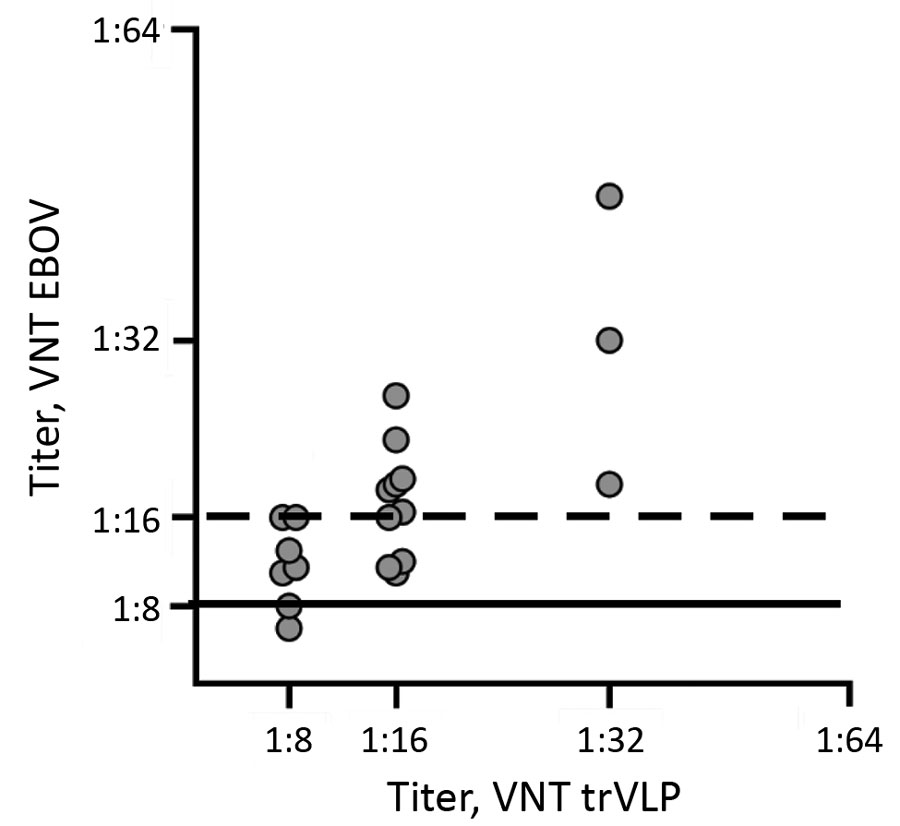Volume 26, Number 4—April 2020
Dispatch
Ebola Virus Neutralizing Antibodies in Dogs from Sierra Leone, 2017
Figure 2

Figure 2. Analysis of dog serum samples (circles) in VNTs for study of EBOV neutralizing antibodies in dogs, Moyamba District, Sierra Leone, 2017. Comparison of dog serum titers obtained in VNTs was based on live EBOV (variant Mayinga) and EBOV trVLP. For VNT using authentic EBOV, serum samples with a titer <1:8 (horizontal solid line) are counted as negative; samples with a neutralizing titer >1:8 are considered positive. For trVLP-based VNT, titers equal to 1:16 (horizontal dashed line) are counted as positive. EBOV, Ebola virus; trVLP, transcription and replication competent virus-like particles; VNTs, virus neutralization tests.
Page created: March 17, 2020
Page updated: March 17, 2020
Page reviewed: March 17, 2020
The conclusions, findings, and opinions expressed by authors contributing to this journal do not necessarily reflect the official position of the U.S. Department of Health and Human Services, the Public Health Service, the Centers for Disease Control and Prevention, or the authors' affiliated institutions. Use of trade names is for identification only and does not imply endorsement by any of the groups named above.